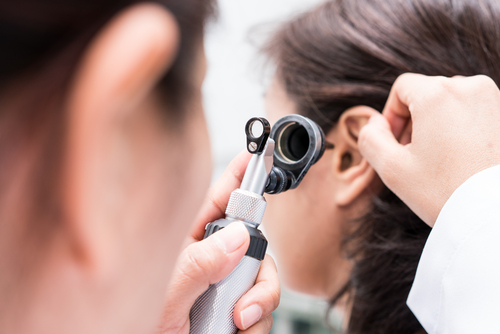Thyroid Medication for Graves’ Disease Caused AAV Symptoms in Ear, Case Study Reports

Researchers reported the case of a patient who developed suspected ANCA-associated vasculitis (AAV) in the ear followed by hearing loss after taking propylthiouracil, a thyroid medication for Graves’ disease.
While the medicine has been widely linked with AAV in other studies, its ability to cause otitis and hearing loss is not fully acknowledged.
The report, “Propylthiouracil-induced Otitis Media with Antineutrophil Cytoplasmic Antibody-associated Vasculitis,” was published in the journal Internal Medicine.
Ear, nose, and throat symptoms are common in patients with ANCA-associated vasculitis (AAV), appearing in up to 90 percent of patients during the course of their disease. Indeed, one of the initial manifestations of AAV may be otitis (ear inflammation) or hearing loss. But many patients have localized symptoms and are never diagnosed with the disease, leading to a delay in treatment.
Researchers at Shinshu University School of Medicine in Japan reported the case of a 30-year-old woman who developed inflammation of the middle ear, which was linked to ANCA-associated vasculitis.
The patient was admitted to the hospital due to complaints of pain and hearing loss affecting both ears. For the past seven years, she had been receiving treatment for Graves’ disease, an autoimmune disorder characterized by excess thyroid hormones.
She was prescribed Tapazole (methimazole) in the first year, but a skin reaction led to a change in treatment, and she was prescribed propylthiouracil, which she took daily for the next six years.
Before her hospital admission, the patient visited a specialized clinic for her hearing loss. Physicians suspected ear infection and gave her an oral antibacterial agent, but two weeks later the patient complained of ear pain and was diagnosed with otitis of the middle ear, which was unresponsive to antibiotic treatment.
At admission, she had impaired hearing in both ears and a painful sensation on the left side of her face. No additional physical symptoms were found.
An ear exam revealed that the inner soft tissues were red and releasing fluids into the tympanic cavities, which suggested active inflammation. Additional testing ruled out infections and malignancies, as well as any lung or heart involvement.
While thyroid hormones were within normal range, the patient had elevated levels of white blood cells and blood platelets, as well as increased C-reactive protein and MPO autoantibody levels.
The findings all indicated AAV, but a final diagnosis of otitis media with ANCA-associated vasculitis would require middle ear manifestations for more than three months.
“Therefore, it was consequently impossible to meet the criteria for ANCA-associated vasculitis [diagnosis],” investigators wrote.
Nonetheless, the patient started taking 40 mg of prednisolone daily and stopped taking propylthiouracil. As an alternative therapy for Graves’ disease, she received radioiodine (131I), which maintained a normal thyroid function.
She experienced immediate pain relief, and her hearing capacity gradually returned. Two weeks later, her blood parameters were back to normal, including the levels of MPO autoantibodies.
“This case suggested that patients with Graves’ disease who are treated with propylthiouracil may develop localized auditory impairment resembling otitis media with ANCA-associated vasculitis,” researchers wrote.
Additional studies are warranted to determine the definitive prognosis of propylthiouracil use in the development of otitis media with AAV, they added.






